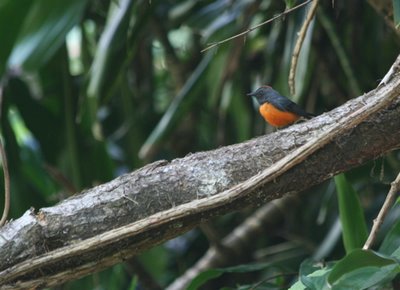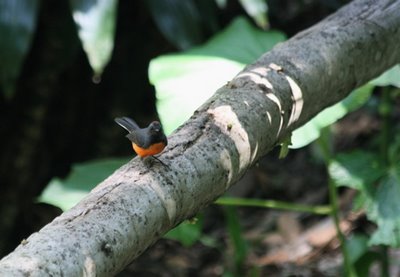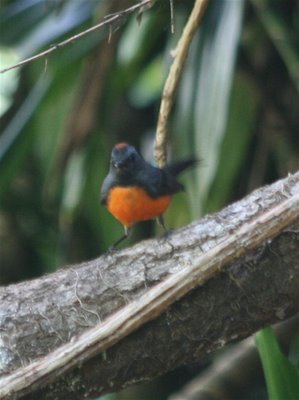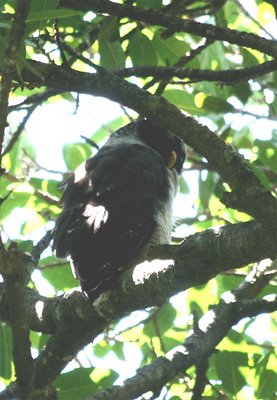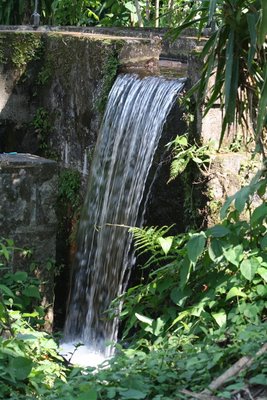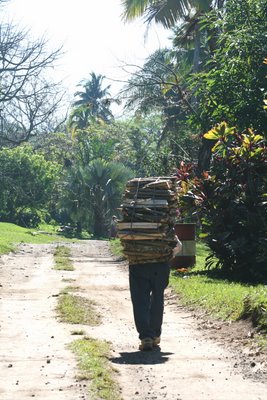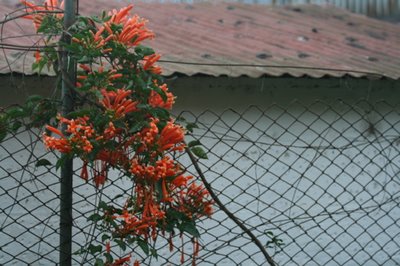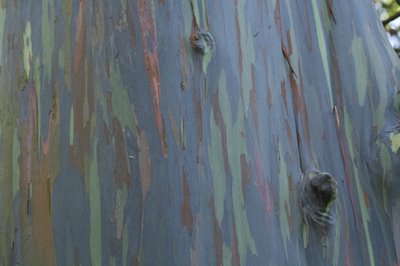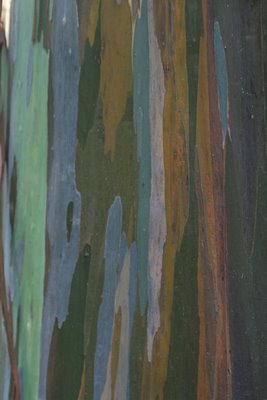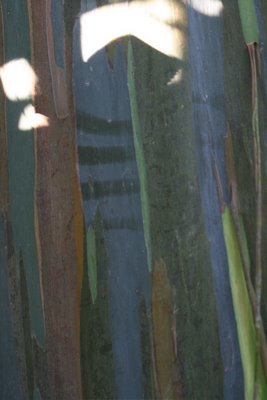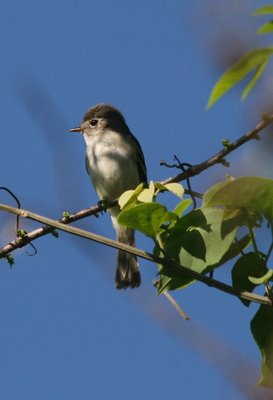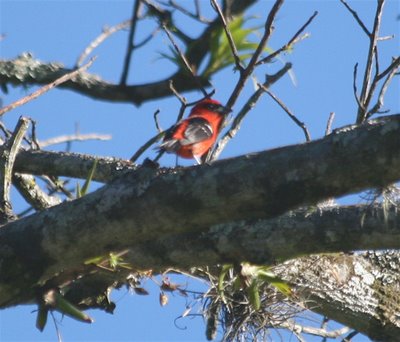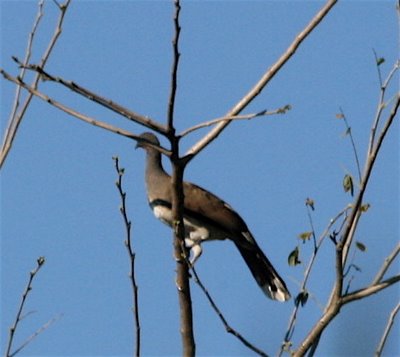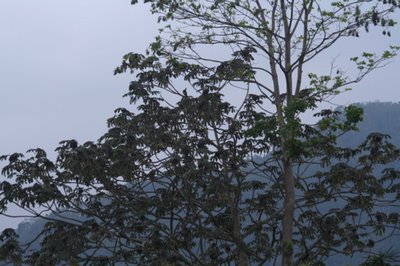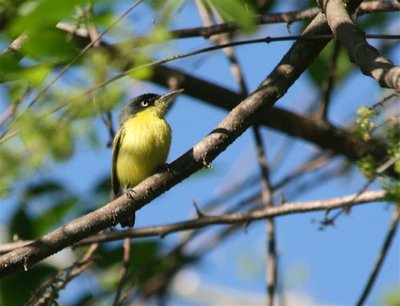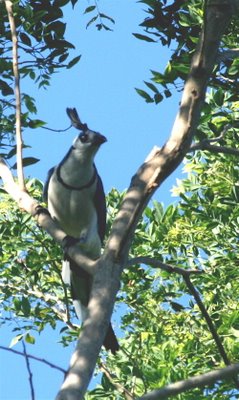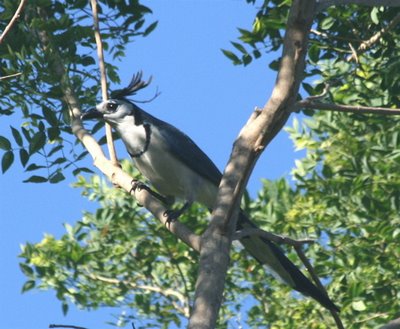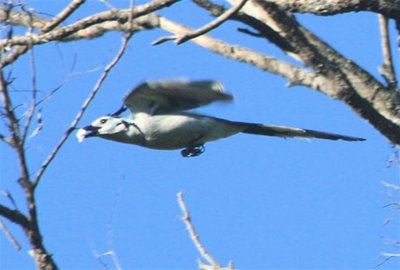Birds of Cerro Cahui
After our twilight birding adventure at Ixpanpajul, we were really ready for some daylight birding. So when the sun came up, we were ready and waiting at Cerro Cahui for whatever winged treasures it could offer.
A ruddy-tailed flycatcher was pretty darn cute, stub-tailed and puffy. He's giving a squeaky call every few seconds. He looked like an Easter chick cartoon.
There are a LOT of flycatchers in Guatemala. This is one of the more distinctive ones.
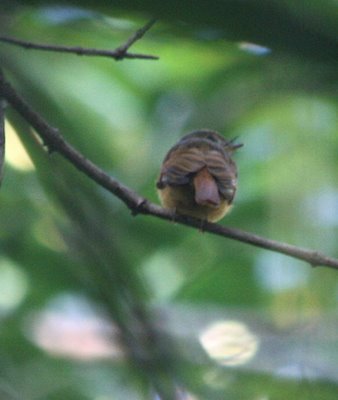
A commotion of birds heralded the approach of an army ant column. When army ants are on the march, insects and animals of all stripes and sizes flee madly from their carnivorous jaws. Lots of bird species specialize in hunting out and following ant columns for the invertebrates they stir up. Many of those species have "ant" in their names. Antpitta, antbird, antwren, antthrush, ant tanager. They're all cool birds, and they get the birdwatcher's heart pounding, because you have to be in good humid lowland forest to see many of them. This is a red-throated ant tanager. Apologies for the photo, but I hate flash, preferring to open the shutter and up the ISO instead.
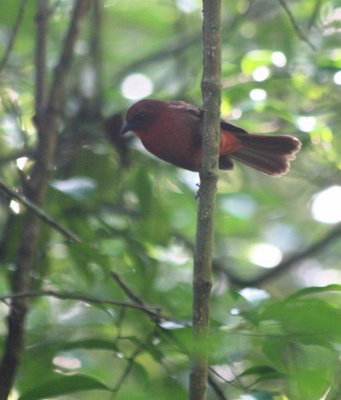
I loved shooting the birders, too, twisted into lots of back-wrenching poses as they strained to catch glimpses of a hidden keel-billed toucan.
 The toucan was yelping like a puppy somewhere in an emergent tree, but it took us quite awhile to find it. Hmmm. It's got to be up there somewhere.
The toucan was yelping like a puppy somewhere in an emergent tree, but it took us quite awhile to find it. Hmmm. It's got to be up there somewhere.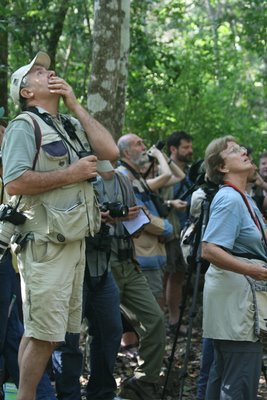 I have it!
I have it!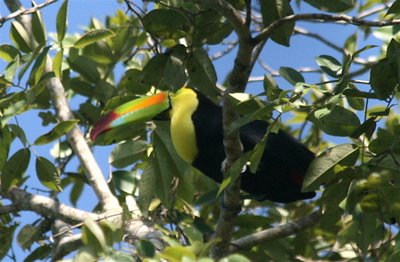 Can that bill be possible?? Blood red, sky blue, apple green and tangerine orange??
Can that bill be possible?? Blood red, sky blue, apple green and tangerine orange??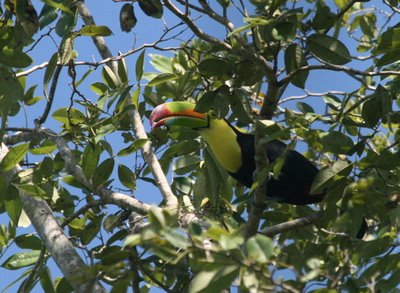
Oh yes, oh yes. It is a keel-billed toucan, and it is looking right at me.
Where?? Right there!
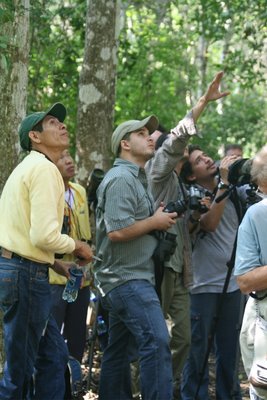 Oh! How could we have missed that? In a land that explodes with color, even the gaudiest toucan disappears against the brilliant leaves and sky. His black plumage reads as a negative space; his sulfur breast as just more vegetation. Green parrots are just about impossible to pick out, even with their flashes of color. It's all so bright and colorful, they blend right in.
Oh! How could we have missed that? In a land that explodes with color, even the gaudiest toucan disappears against the brilliant leaves and sky. His black plumage reads as a negative space; his sulfur breast as just more vegetation. Green parrots are just about impossible to pick out, even with their flashes of color. It's all so bright and colorful, they blend right in.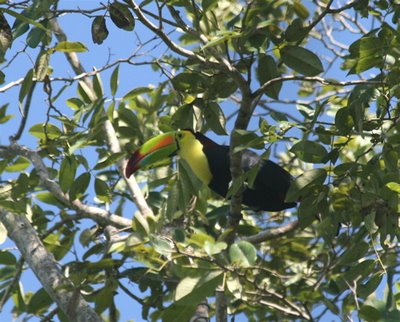 Farther up the trail, another humid forest denizen--the rufous-tailed jacamar. Related to kingfishers and bee-eaters, it sits quietly on a perch, then sallies off after katydids and lizards--whatever it can subdue with its knitting-needle bill.
Farther up the trail, another humid forest denizen--the rufous-tailed jacamar. Related to kingfishers and bee-eaters, it sits quietly on a perch, then sallies off after katydids and lizards--whatever it can subdue with its knitting-needle bill.
But my favorite bird of Cerro Cahui was the gray-throated chat, another hopelessly misnamed jewel of the tropical forest. Are you ready? I think the last thing you'll remark on is the bird's gray throat, but the ornithological powers seem to think it's a good name. Never mind all the carmine pink spilling down its front like strawberry jam:
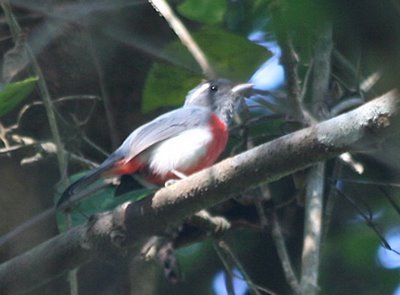
Liam, looking over my shoulder. "Isn't that a pretty bird, Boom Boom?" I ask.
Liam: "Oh yes, but he's kind of blurry."
"Yeah. I know. Doing my best."
Labels: Cerro Cahui, gray-throated chat, Guatemala birding, keel-billed toucan, red-throated ant tanager, rufous-tailed jacamar

